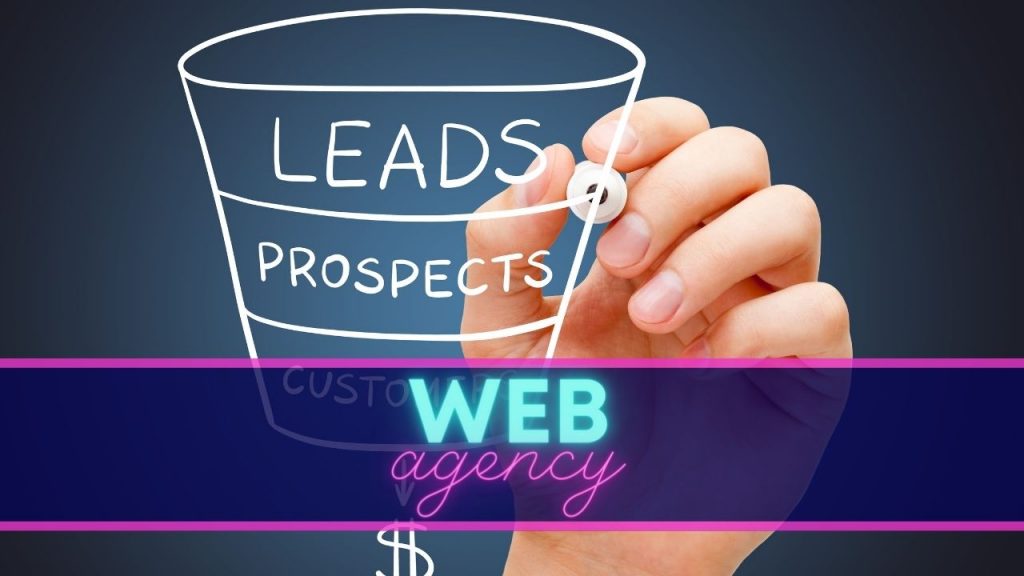Imagine if you could increase your sales while reducing the time and effort needed to get there. That’s exactly what a well-designed sales tunnel can accomplish for your business. In this article, we’ll guide you through the key steps to creating an effective sales tunnel that converts visitors into loyal customers, and can help maximize your profits. So, let’s get started!
Defining the sales funnel
A sales tunnel is a strategic process that guides website visitors through a series of specific steps, with the ultimate aim of turning them into loyal customers. It’s an automated system that uses landing pages, e-mails, upsells and downsells to convince visitors to take a specific action, such as buying a product or signing up for a subscription. The aim of a sales tunnel is to maximize conversions and sales, while minimizing marketing and advertising costs.
Defining your objectives and target audience
The first step to creating an effective sales tunnel is to define your objectives and target audience. This will help you better understand what you want to achieve with your sales tunnel and who you want to reach. Here’s how to do it:
Identify your sales funnel objectives
What do you want to achieve with your sales tunnel? Do you want to increase your sales, your mailing list or your customer base? What are your success indicators, such as conversion rate or sales generated?
Determine your target audience
Who is your target audience for your sales tunnel? What are your audience’s needs and interests? How familiar are they with your brand and products? This information will help you create content and offers tailored to your target audience.
By clearly identifying your objectives and target audience, you can create a sales tunnel that resonates with your audience, meets their needs and encourages them to take action.
Creating a compelling landing page
The second step in creating an effective sales tunnel is to create a convincing landing page. The landing page is the first page your visitors see after clicking on your ad or link, and it needs to convince your visitors to continue their journey through your sales tunnel. Here are a few tips for creating a convincing landing page:
Use a clear, simple design
The design of your landing page should be clear, simple and attractive. Use a consistent color palette, an easy-to-navigate layout and high-quality images to grab your visitors’attention.
Create a catchy title
The title of your landing page should clearly state what you offer and why it is beneficial to your visitors. Use clear, compelling language to entice your visitors to read on.
State the benefits of your offer
Use bullet points or short paragraphs to explain the benefits of your offer. Highlight the strengths of your product or service, highlighting key benefits for your visitors.
Add a call to action (CTA)
A clear and visible call to action is crucial to encourage your visitors to take the next step in your sales tunnel. Use clear, compelling text to encourage visitors to click on your CTA.
Use social proof
Testimonials, reviews and customer opinions are forms of social proof that can help boost the credibility of your offer. Use quotes from satisfied customers or product reviews to show that your offering is reliable and popular.
Designing a persuasive e-mail sequence
The third step in creating an effective sales tunnel is to design a persuasive e-mail sequence. Emails are a key element of your sales tunnel, as they enable you to communicate with your visitors and guide them towards purchase or registration. Here’s how to create a persuasive e-mail sequence:
.
Establish a calendar
Plan which e-mails you will send and how often. You want to avoid sending too many emails so as not to annoy your subscribers, but you also don’t want to wait too long before sending the next email.
Personalize your e-mails
Use your subscriber’s name in the body of the e-mail and personalize the e-mail content according to their behavior on your website.
Use an eye-catching e-mail subject line
Your email subject line should be catchy and enticing to entice subscribers to open your email.
Write compelling content
Use clear, compelling language to explain the benefits of your product or service and entice subscribers to take action.
Include calls to action (CTAs)
Use a clear, visible call to action to encourage subscribers to click on your link and continue their journey through your sales tunnel.
Use social proof
Include testimonials from satisfied customers or product reviews to reinforce the credibility of your offer.
Monitor results
Use analytics tools to track the open, click and conversion rates of your emails. This will enable you to optimize your e-mail sequence to maximize conversions.
Add upsells and downsells
The fourth step in creating an effective sales tunnel is to add upsells and downsells. Upsells and downsells are additional offers you can make to your potential customers during the buying process. Here’s how to add upsells and downsells to your sales tunnel:
Propose additional offers
Upsells are offers that complement your initial offer, while downsells are cheaper alternative offers. For example, if you’re selling a beauty product, you might offer a moisturizing cream as an upsell and a cheaper facial cleanser as a downsell.
Use incentives to encourage customers to buy
To encourage customers to buy upsells or downsells, you can offer discounts or free gifts. For example, you could offer a 10% discount for the purchase of a complementary product.
Present upsells and downsells at the right time
To maximize the chances of conversion, present upsells and downsells when the customer is most engaged. For example, you could offer an upsell after the customer has added a product to their basket, or a downsell after the customer has abandoned their basket.
Use effective pricing strategies
Use effective pricing strategies for your upsells and downsells. For example, you could offer a discount for the purchase of several products, or offer an upsell at a price slightly lower than the original price.
Optimizing your sales tunnel
The final step in creating an effective sales tunnel is to’optimize your sales tunnel. Optimization means continually improving the sales process to maximize conversions and profits. Here’s how to optimize your sales tunnel:
Use A/B testing
A/B testing involves testing two different versions of your sales tunnel to see which one works best. You can test different versions of your landing page, your e-mail sequence or your upsell/downsell offers.
Track key metrics
Track key metrics such as conversion rate, bounce rate and time spent on page. This, to identify areas of your sales tunnel that require improvement.
Remove obstacles
Identify the obstacles that prevent visitors from taking the next step in your sales tunnel and eliminate them. For example, if visitors abandon their shopping cart, offer them a discount to entice them to buy.
Make load tests
Load testing allows you to test your website’s ability to handle large numbers of visitors. If your website is slow or breaks down during peak hours, you risk losing sales.
Customize the user experience
.
Customize the user experience according to the user’s interests and behavior. For example, you can display upsell and downsell offers based on the products the customer has consulted.









